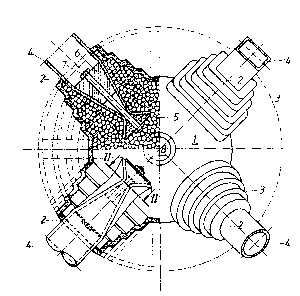Some of the information on this Web page has been provided by external sources. The Government of Canada is not responsible for the accuracy, reliability or currency of the information supplied by external sources. Users wishing to rely upon this information should consult directly with the source of the information. Content provided by external sources is not subject to official languages, privacy and accessibility requirements.
Any discrepancies in the text and image of the Claims and Abstract are due to differing posting times. Text of the Claims and Abstract are posted:
| (12) Patent: | (11) CA 1284265 |
|---|---|
| (21) Application Number: | 1284265 |
| (54) English Title: | JOINT CONNECTION |
| (54) French Title: | RACCORD SUR JOINT |
| Status: | Expired and beyond the Period of Reversal |
| (51) International Patent Classification (IPC): |
|
|---|---|
| (72) Inventors : |
|
| (73) Owners : |
|
| (71) Applicants : | |
| (74) Agent: | SMART & BIGGAR LP |
| (74) Associate agent: | |
| (45) Issued: | 1991-05-21 |
| (22) Filed Date: | 1987-01-13 |
| Availability of licence: | N/A |
| Dedicated to the Public: | N/A |
| (25) Language of filing: | English |
| Patent Cooperation Treaty (PCT): | No |
|---|
| (30) Application Priority Data: | ||||||
|---|---|---|---|---|---|---|
|
ABSTRACT
In a joint connection having a plurality of rods that
are combined to form a joint, the ends of the rods that protrude
through openings in a metal casing filled with hardenable filler
substance are necked down; in the necked down end section of each
rod there are two conical expander elements that can be tightened
against each other by means of a tension element, said expander
elements being under tension and situated on opposite sides of the
necked down portion of the rods.
Note: Claims are shown in the official language in which they were submitted.
Note: Descriptions are shown in the official language in which they were submitted.

2024-08-01:As part of the Next Generation Patents (NGP) transition, the Canadian Patents Database (CPD) now contains a more detailed Event History, which replicates the Event Log of our new back-office solution.
Please note that "Inactive:" events refers to events no longer in use in our new back-office solution.
For a clearer understanding of the status of the application/patent presented on this page, the site Disclaimer , as well as the definitions for Patent , Event History , Maintenance Fee and Payment History should be consulted.
| Description | Date |
|---|---|
| Inactive: Adhoc Request Documented | 1994-05-21 |
| Time Limit for Reversal Expired | 1993-11-23 |
| Letter Sent | 1993-05-21 |
| Grant by Issuance | 1991-05-21 |
There is no abandonment history.
Note: Records showing the ownership history in alphabetical order.
| Current Owners on Record |
|---|
| "COMPROJECT" HANDELSVERTRETUNG UND TECHN. BURO FUR MASCHINENBAU FRANTL & CO. OHG |
| BEER, MANFRED |
| Past Owners on Record |
|---|
| ALBERT P. RAUNICHER |
| ERICH FRANTL |
| PETER HOFSTATTER |
| WERNER FRANTL |
| WILLIBALD ZEMLER |